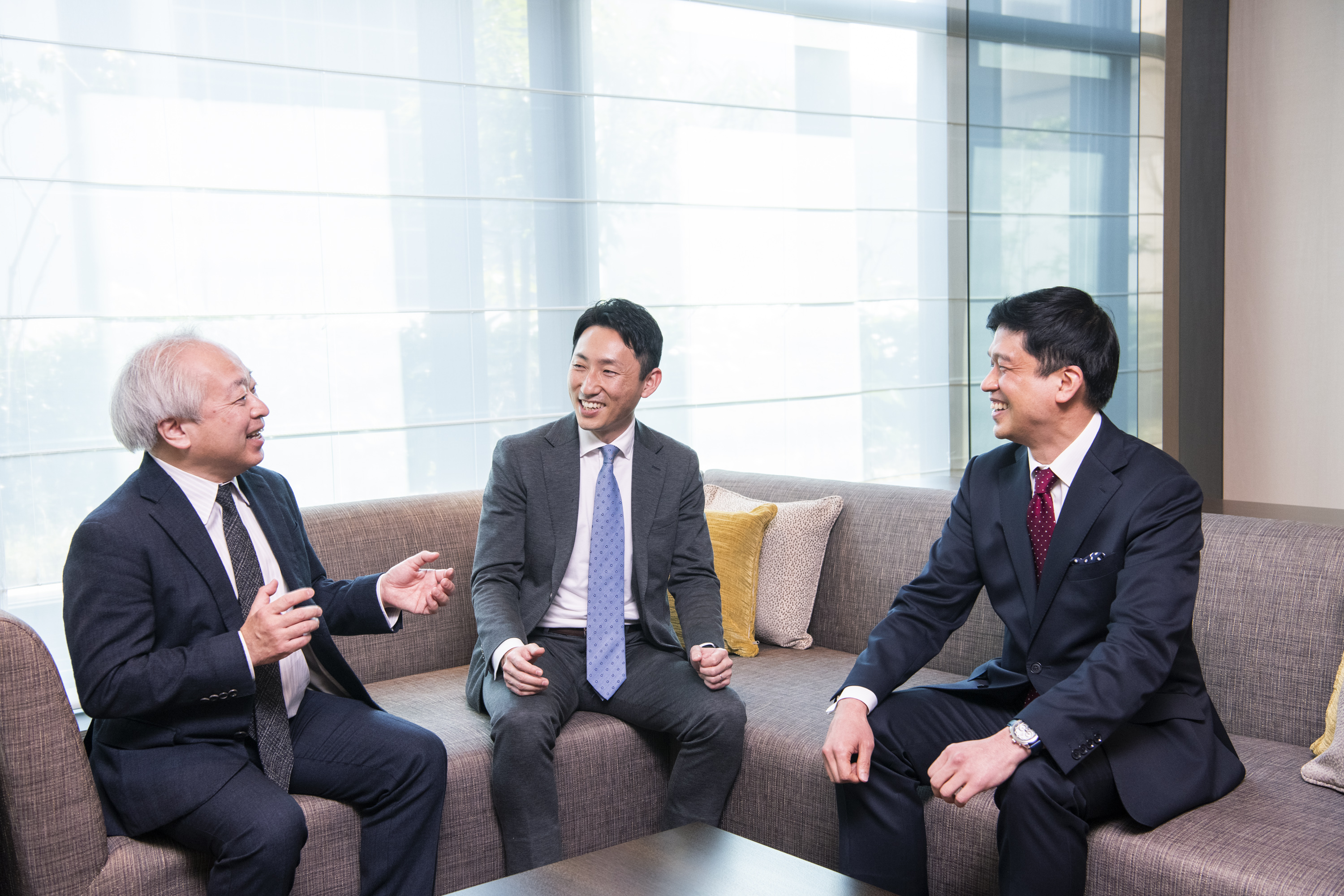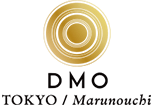SUSTAINABILITY
Interview
Sourcing electricity solely from renewable energy sources Leading the district to create a sustainable environment
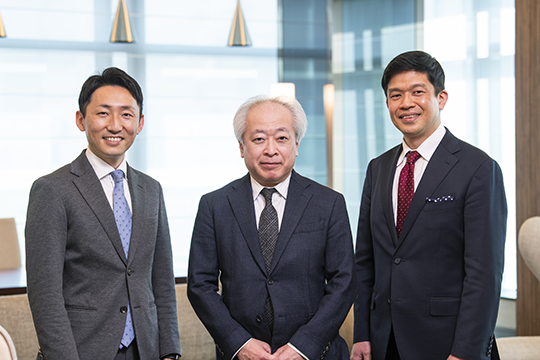
From left to right
Hirotaka Masuoka
General Manager, General Affairs No.2, Tekko Building Co., Ltd.
General Manager, General Affairs No.2, Tekko Building Co., Ltd.
Tetsuo Isono
General Manager, Space Planning Maintenance and Operations, Tekko Building Co., Ltd.
General Manager, Space Planning Maintenance and Operations, Tekko Building Co., Ltd.
Jun Shinohara
General Manager, Oakwood Premier Tokyo
General Manager, Oakwood Premier Tokyo
Tekko Building is a landmark in Tokyo’s Marunouchi district that has developed hand-in-hand with the community over a period of more than 70 years. In January 2021, they switched their entire electricity supply to energy sourced from renewable resources. We talked about sustainability initiatives with the two staff members responsible for implementing the SDGs at Tekko Building Co., Ltd., which runs the Tekko Executive Lounge & Conference Rooms, and the general manager of Oakwood Premier Tokyo, which operates the serviced apartments within the building.
Towards a new style of large-scale complex linking people, the city and the times in every era
――
Please give us a little background on the history of the Tekko Building company.
Masuoka
The history of our business can be traced back to 1888 when Tekko Building’s corporate ancestor, Masuoka Shoten, began trading in Hiroshima’s Kure City. Tekko Building Co., Ltd. was established in 1949, shortly after the war, and contributed to the country’s recovery in its role as a business center. The initial Tekko Building, which was completed in 1951, was Japan’s first high-rise building, with two basement floors and eight floors above ground. Three years later, the second building, which featured a building-wide air-conditioning system, was completed. One of our goals when choosing a full rebuild of this historic building that was so deeply rooted in the area was to aim for greater safety features. The present building, which began life in its new form in 2015, is equipped to withstand an earthquake on the scale of the Great Hanshin Earthquake, and was the first in the area to employ a mid-story isolated structure.

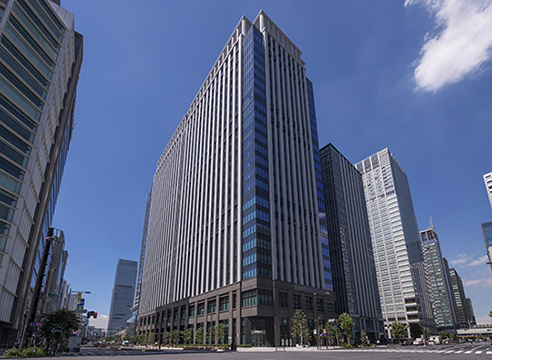
A street view of the present-day Tekko Building
Photo provided by Tekko Building
Photo provided by Tekko Building
Isono
At the time, Haneda Airport had begun operating as a 24-hour international airport, and Marunouchi was widely accepted as the gateway to Tokyo. One of our goals with rebuilding was to respond to the diversifying needs of society, and so we bolstered our facilities with an airport limousine bus terminal, serviced apartments, and executive lounge and conference room facilities, while attracting a range of appealing tenants for our commercial area. Our concept for the redevelopment was linking people, the city and the times in every era. This encompasses a variety of meanings—linking Japan with the world, Tokyo with the regions (in our location next to a Shinkansen terminal), and the past with the future over its long history.
――
I hear the rebuild resulted in huge improvements to environmental performance.
Isono
We take pride in the fact that our building is as environmentally friendly as was possible at the time. During construction, we went out of our way to use recycled steel and materials, recycling over 90% of the waste material from the building. Other significant measures we took include installing LED lighting across the entire building (at a time when this was more-or-less unheard of), fitting solar-tracking automated blinds, and heating water using waste heat generated by the underground electrical room.
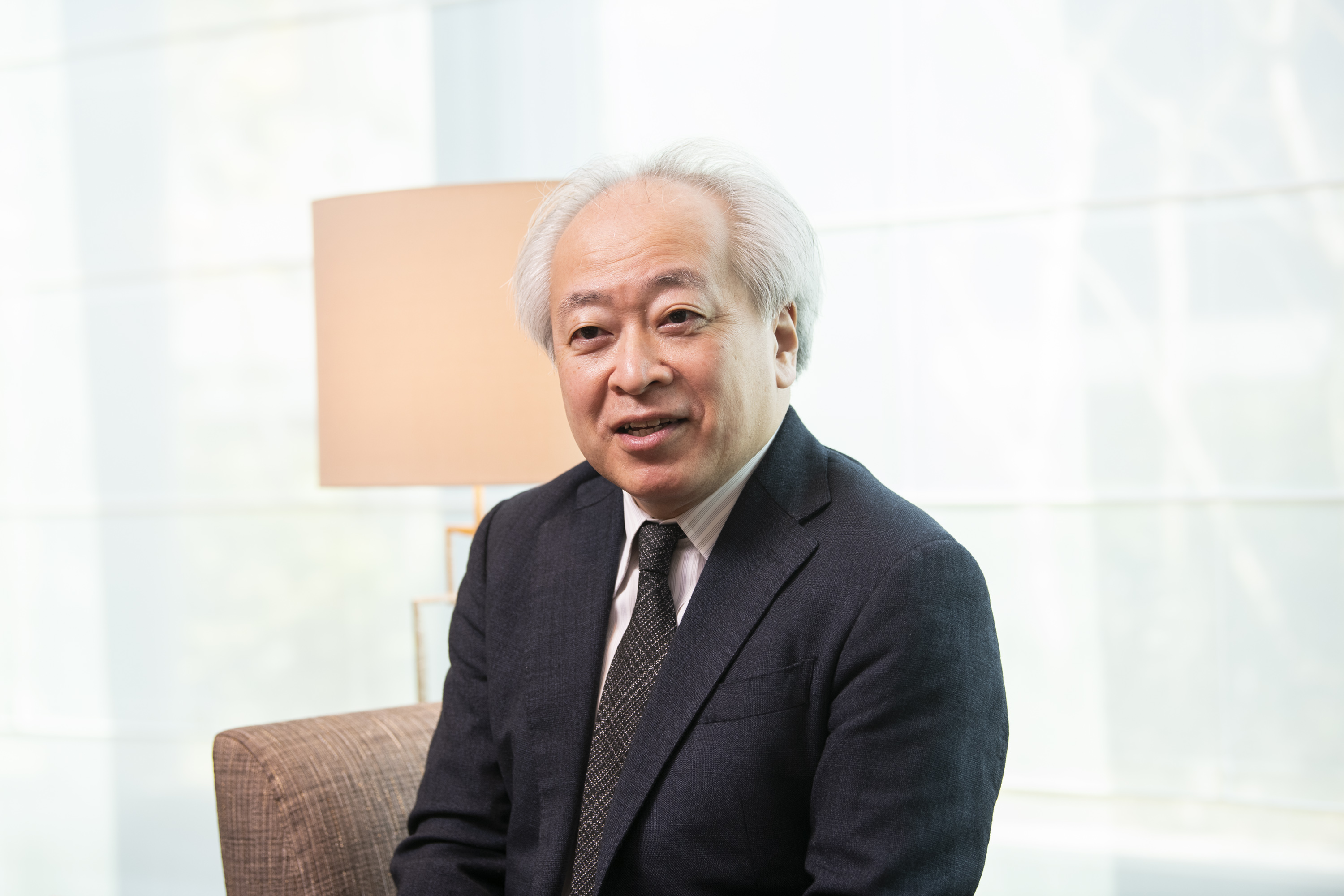
Switching the electricity supply to 100% renewable energy as part of an SDGs project
――
In January 2021 you realized your goal of switching the supply to electricity generated 100% from renewable energy sources. This was a first for a large-scale complex in Japan*1, and we are interested to hear the background to this initiative.
Masuoka
As we approached our 70th-year anniversary in 2019, we discussed where we wanted to take our business and came up with the corporate slogan, For a place where all shine brighter. When we were considering what kind of concrete measures were possible for our company, the Sustainable Development Goals (SDGs) provided us with valuable clues. We can interpret the SDGs’ vision for 2030 as a world where everyone can be themselves and live a good life, and we realized that this overlapped with what we were aiming for.
As we worked through the process of launching a company-wide SDGs project and entered deeper into discussions, we came to the conclusion that if we wanted to improve our environmental performance, we would need to rethink the energy and resources we were procuring. That is when we arrived at the idea of introducing renewable energy.
As we worked through the process of launching a company-wide SDGs project and entered deeper into discussions, we came to the conclusion that if we wanted to improve our environmental performance, we would need to rethink the energy and resources we were procuring. That is when we arrived at the idea of introducing renewable energy.
Isono
Our electricity supplier, ENEOS, had actually already introduced us to the idea of using renewable energy. The only thing was, that if we switched over it would definitely result in increased electricity costs. As we reconsidered the idea this time, that was again the main issue, and we heard a range of different opinions such as, “Is it really necessary to prioritize spending on this right now?” or “If we’re going to run with this, maybe we should keep it partial rather than 100%.”
Masuoka
In the end, the reason we committed to 100% was a mix of our own strong desire to contribute to realizing a sustainable society through our business, and the sense that societal demand for environmentally friendly buildings was increasing year by year. Our tenants include companies that are members of RE100*2, and if this kind of company increases rapidly, we will no longer be chosen by potential tenants unless we shift away from conventional procurement. We also anticipate greater demand for CO2-free energy from MICE hosts and customers using the serviced apartments and executive lounge and conference rooms. We see improving our environmental value as an indispensable investment rather than a cost.
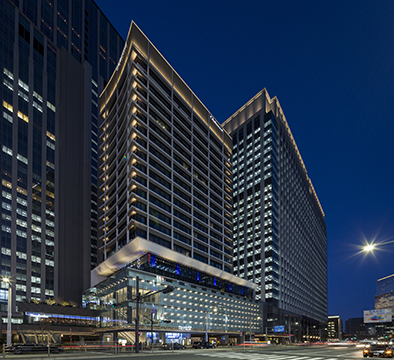
The Tekko Building at night
Photo provided by Tekko Building
Photo provided by Tekko Building
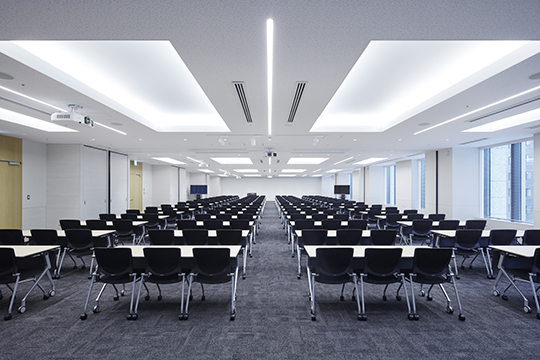
A conference room capable of accommodating MICE of various sizes
Photo provided by Tekko Building
Photo provided by Tekko Building
――
How do you actually get hold of electricity from renewable energy sources?
Isono
ENEOS supplies us with electricity that has a CO2 emission factor of zero procured from the biomass power plants in Kawasaki and Muroran Cities. The Kawasaki plant uses wood chips for fuel and the Muroran plant uses palm kernel shells, generating electric power through carbon neutral systems that do not use fossil fuels. By introducing electricity sourced from renewable energy resources, we expect to cut our CO2 emissions by approximately 8,000 tons annually.
Masuoka
We also consulted the Japan Climate Leaders’ Partnership (JCLP), the Japanese contact for RE100 membership, on a range of issues when introducing the initiative, and in January 2021, we joined the partnership as a supporting member.
As for the charges associated with switching the electricity supply, which have increased by slightly over 10%, we bear these ourselves and do not pass them on to our tenants. As long as electricity remains a part of basic infrastructure, we believe fluctuating charges attributable to our company policy are not desirable for tenant companies.
As for the charges associated with switching the electricity supply, which have increased by slightly over 10%, we bear these ourselves and do not pass them on to our tenants. As long as electricity remains a part of basic infrastructure, we believe fluctuating charges attributable to our company policy are not desirable for tenant companies.
*1
According to Tekko Building research
*2
An international initiative whose members are companies that have committed to switching their electricity supply to 100% renewable energy.
Deepening initiatives in partnership with diverse stakeholders
――
How did Oakwood Premier Tokyo react to the idea of sourcing 100% of electricity from renewable energy resources?
Shinohara
We were delighted when we heard of the plan. At a time when SDGs are the focus of this kind of attention, we were the first operator to run serviced apartments entirely on electricity from renewable energy sources. Each year, in the hotel industry, we respond to RFP (Request for Proposal) that determine the conditions of contracts with global companies, and where once selection depended on a combination of location and price, lately we are seeing engagement with SDGs being added to the criteria. The recent switch to power from renewable energy sources will provide us with a great advantage here, and we are both incredibly grateful for this, and increasingly excited about having a hand in creating a sustainable society.
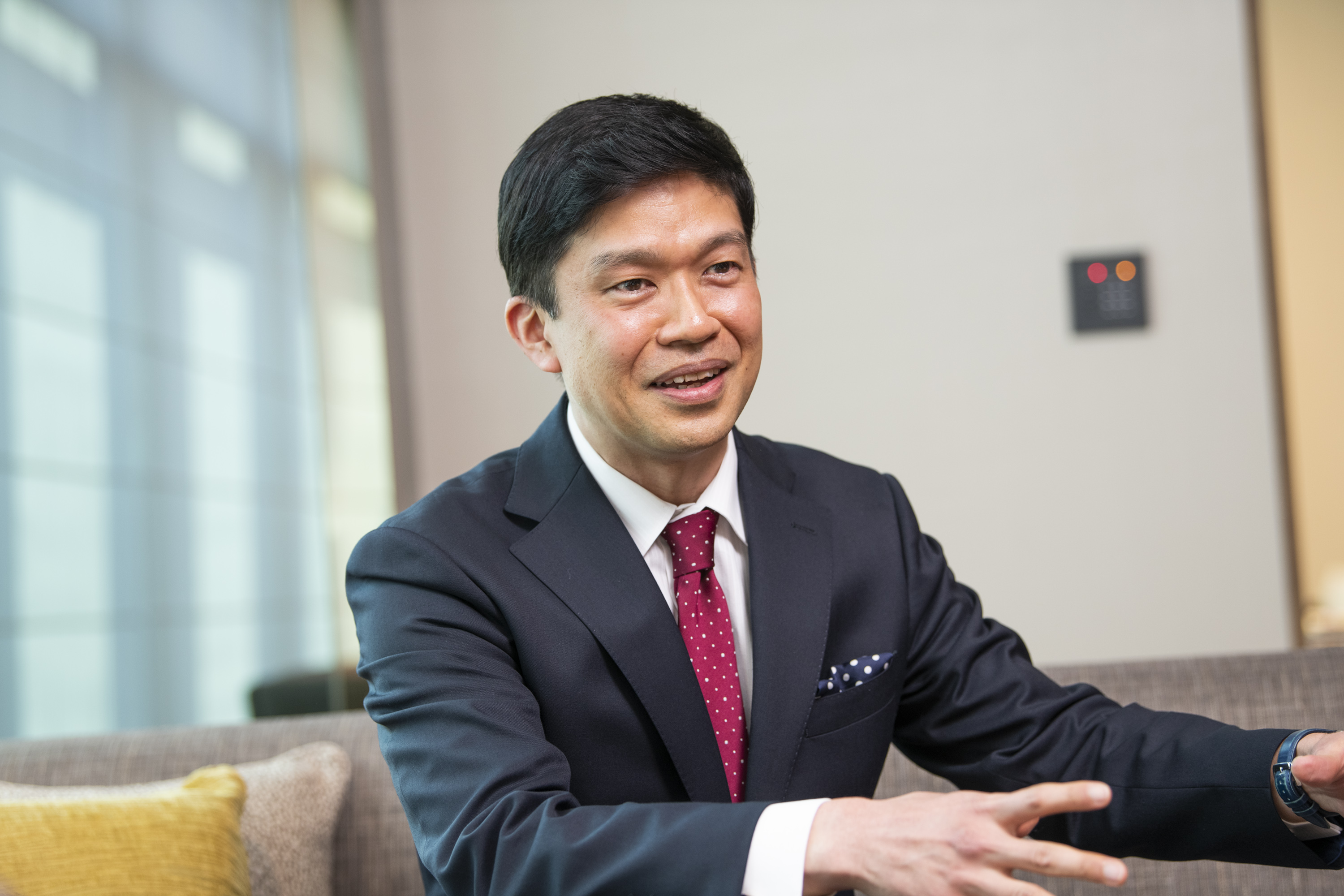
――
Could you tell us about any changes brought about by the initiative, and the reaction both in-house and externally?
Masuoka
The response from our tenants was stronger than anticipated. Naturally, companies that are members of RE100 were extremely pleased, but others have also contacted us with queries like “What portion of the entire CO2 reductions can we attribute to our company?” I get the sense that this initiative is something that will have a large impact not only on our various stakeholders, but also on society.
Isono
I believe that the SDGs project also resulted in some big internal changes too. I think that there is an increasing awareness that SDGs and sustainability are not just a topic for the government or large corporates, but that our business and lifestyles are closely tied up with these conversations. We are seeing an increase in employees making small changes like bringing their own cup or taking the initiative to make suggestions about switching from plastic stirring sticks to wooden ones or asking if it is possible to use recycled paper in the photocopier.
Shinohara
We too have started questioning whether there is anything near at hand that we can do. When buying equipment or supplies we have always considered cost and quality, but now we have a new perspective—"Is the product aligned with the SDGs?” and “Which option is the most environmentally friendly?” As things stand, switching to an environmentally friendly product tends to equate to higher costs. Even so, the fact that our serviced apartments are environmentally conscious is one of the reasons our customers choose us, and engagement with SDGs is also essential when we consider future business growth.
Developing a range of initiatives that benefit the environment and society
――
I hear that you have also introduced a range of other initiatives to support sustainability in addition to sourcing 100% of electricity from renewable energy sources.
Masuoka
Yes. One of our main aims at the time of rebuilding was strengthening our disaster preparedness, and therefore we equipped the building with an emergency power generation system that would provide power for up to 10 days, and organized systems to take in stranded commuters. We have a constant stock of three days’ worth of food and beverages for 2,000 people, and a portion of that food is donated to the foodbank during our routine substitutions.
Isono
Another feature of this building is that we have installed all-gender multi-use restrooms on every floor. As well as equipping restrooms with wall-mounted toddler seats and facilities for ostomates, and ensuring sufficient space for wheelchairs, they are designed to be easy for the LGBT community to use. In the context of respecting diversity, we have also undertaken an initiative where we ask persons with disabilities to tour our facilities and point out any areas of concern, which we then improve on.
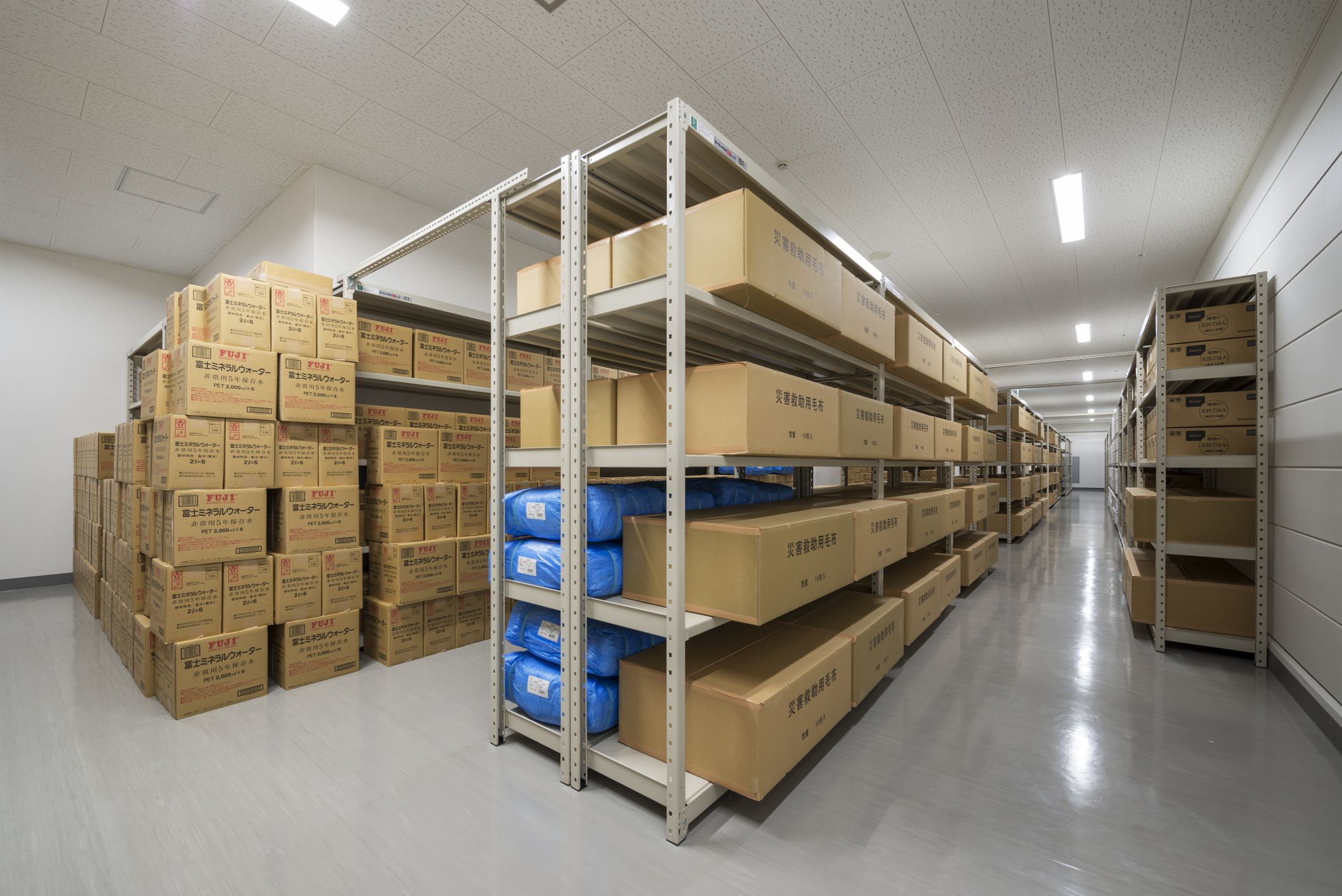
Emergency food and beverage storage
Photo provided by Tekko Building
Photo provided by Tekko Building
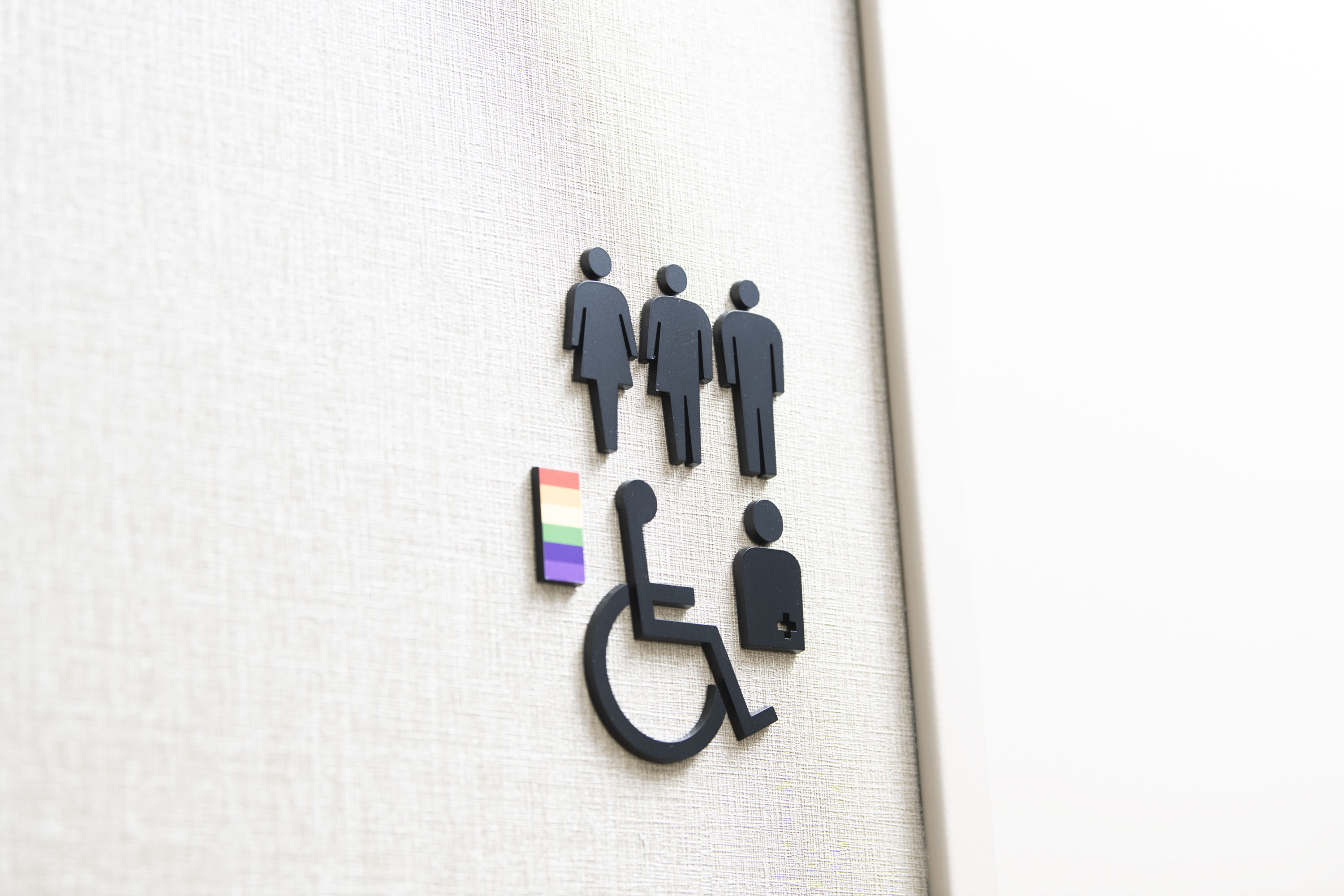
A sign for one of the all-gender multi-use restrooms located on each floor
Masuoka
In terms of the environment, we have also introduced a grey water recycling system. Grey water is considered to sit somewhere between clean water and black water or sewage, so we send the wastewater from places like the building facilities and store kitchens to the grey water plant to be cleaned and reused for flushing toilets, etc. We have also taken care to recreate natural vegetation for the walkways alongside our building—researching what kind of plants would originally have grown in Tokyo’s soil, and selecting species suited to the climate, such as Shirakashi white oak and Tabunoki trees.
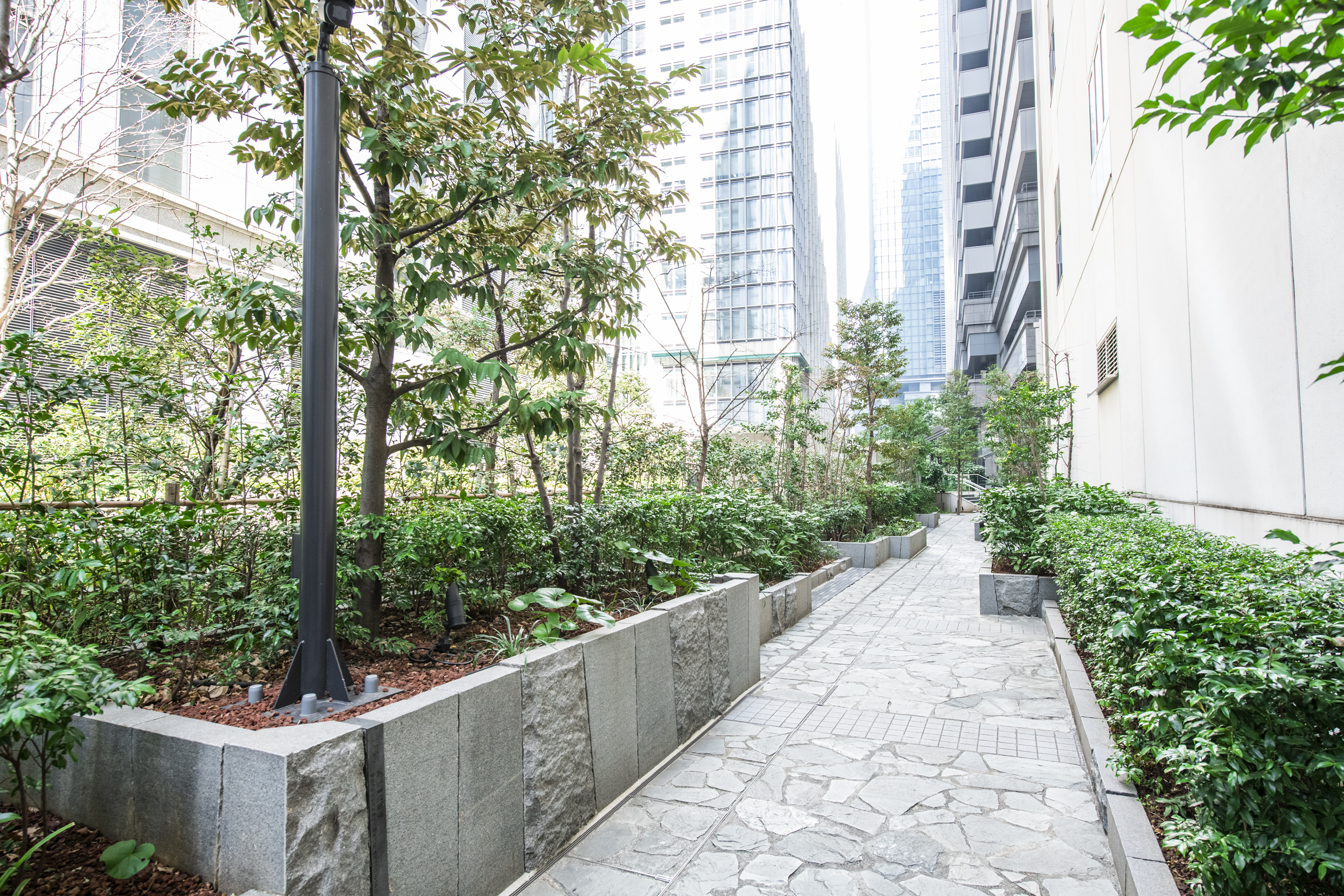
An external walkway with beautifully arrayed plants
――
How about at Oakwood Premier Tokyo?
Shinohara
We have rolled out a hygiene management program known as Oakwood Clean360 that safeguards all of our guests and employees across our global chain. Originally, we brought it in to respond to COVID-19, but digitalizing all the magazines and newspapers touched by unknown multitudes has also led to a huge reduction in paper. Our other initiatives in recent years include changing the breakfast takeout box to packaging made from cornstarch, and cutting out plastic straws and stirring sticks.
The biggest change was cutting food loss at breakfast to almost zero by switching our breakfasts from a buffet to a set menu where dishes are made to order. Here again, infection control provided the impetus, but I am proud to say that this initiative put us one step ahead in the hotel industry.
Another thing we do is providing gift cards to customers who cancel room cleaning. This has the effect of reducing water and power usage by cutting out cleaning and bed linen changes not wanted by customers.
The biggest change was cutting food loss at breakfast to almost zero by switching our breakfasts from a buffet to a set menu where dishes are made to order. Here again, infection control provided the impetus, but I am proud to say that this initiative put us one step ahead in the hotel industry.
Another thing we do is providing gift cards to customers who cancel room cleaning. This has the effect of reducing water and power usage by cutting out cleaning and bed linen changes not wanted by customers.
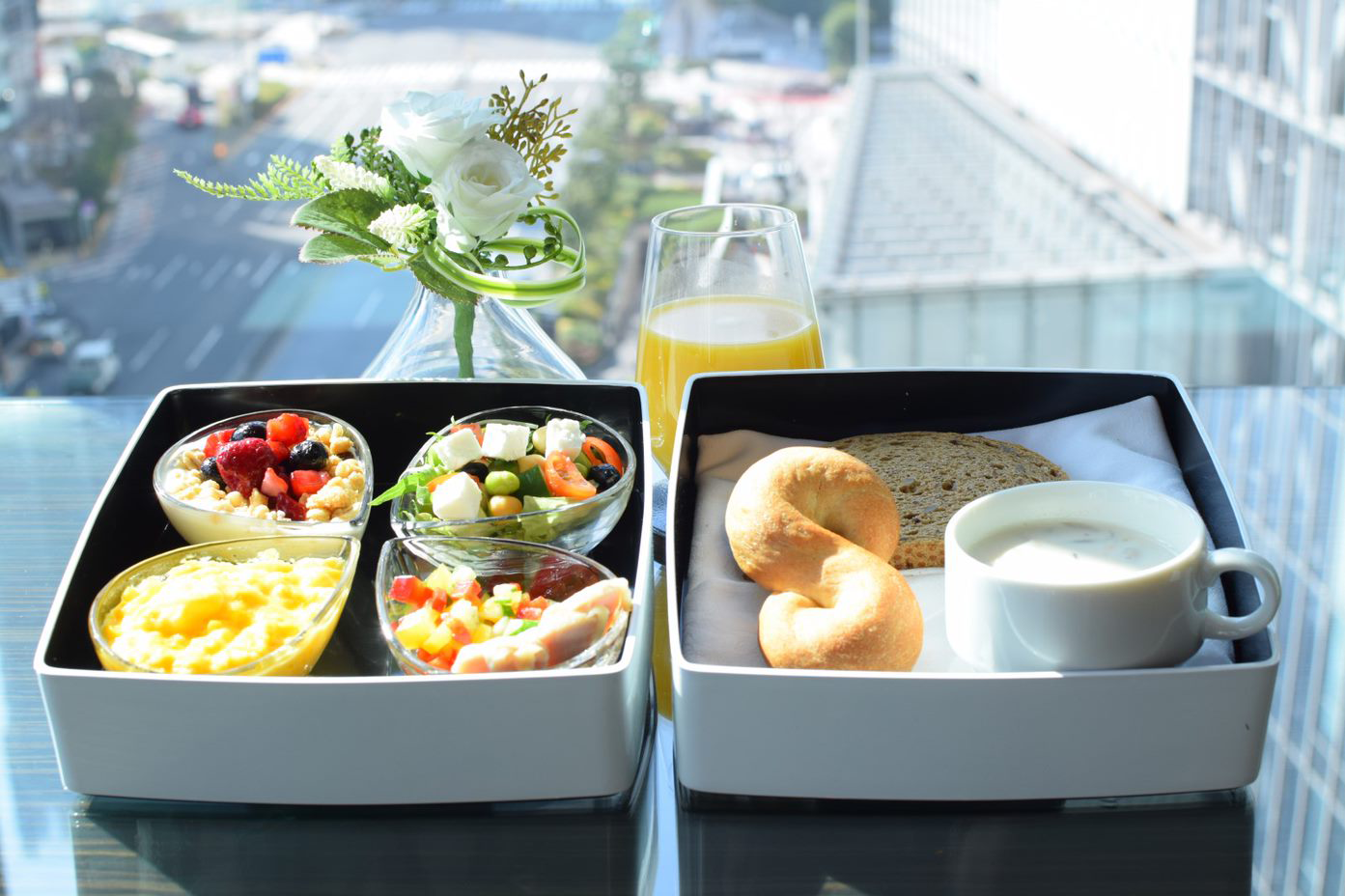
Breakfast box for overnight guests
Photo provided by Oakwood Premier Tokyo
Photo provided by Oakwood Premier Tokyo
Enhancing the charm of the area through progressive sustainability
――
Please tell us about any ideas you have for the future or initiatives you want to focus on.
Isono
We are already working with our partners to reduce waste at MICE events, but we would like to take our food loss measures and plastic container reduction initiatives to the next level. Building-wide our current recycle rate is around 60%, and we still have issues with food waste and burnable waste. First things first, it is important to reduce the output of waste, and to do this we must gain the backing of our tenants. Also, with increasing numbers of people using electric vehicles, we are getting requests to install fast-charging stations. We already fitted the infrastructure during the rebuild, so we would like to consider full-scale introduction going forward.
Shinohara
At Oakwood Premier Tokyo, we are currently still providing our guests with drinking water in plastic bottles, so that seems like the place to start. If we go ahead with installing water dispensers or providing boxed water, we will be able to cut back our annual plastic consumption by a significant amount. After that, we would like to push ahead with local consumption for restaurant ingredients. For example, it would be wonderful if we could provide delicious meals using ingredients grown or raised by farmers in the Kanto region, and transported via electric vehicles that do not emit CO2.
Masuoka
What we have realized through implementing our SDGs project is that sustainability initiatives have inextricably become a part of business itself. I think we must aim to reach a higher level where using our facilities helps to create a sustainable society. It would be great if our facility could contribute to the Daimaruyu area becoming increasingly appealing by demonstrating progressiveness in the area of sustainability too.
Shinohara
I completely agree. By getting people talking about their “switch to electricity generated 100% from renewable energy sources” initiative, Tekko Building has instigated a great new trend. Hopefully, this will provide the impetus for all sorts of things to shift in a positive direction.
